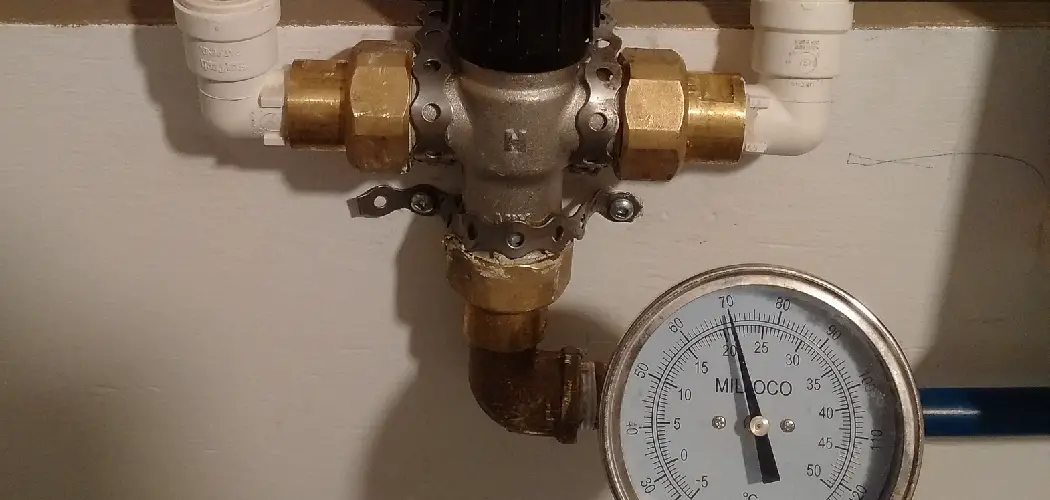Are you looking for a way to take the chill off your morning shower but can’t find any solutions that fit your budget? If you struggle with low water temperatures from your shower head, this guide is just what you need!
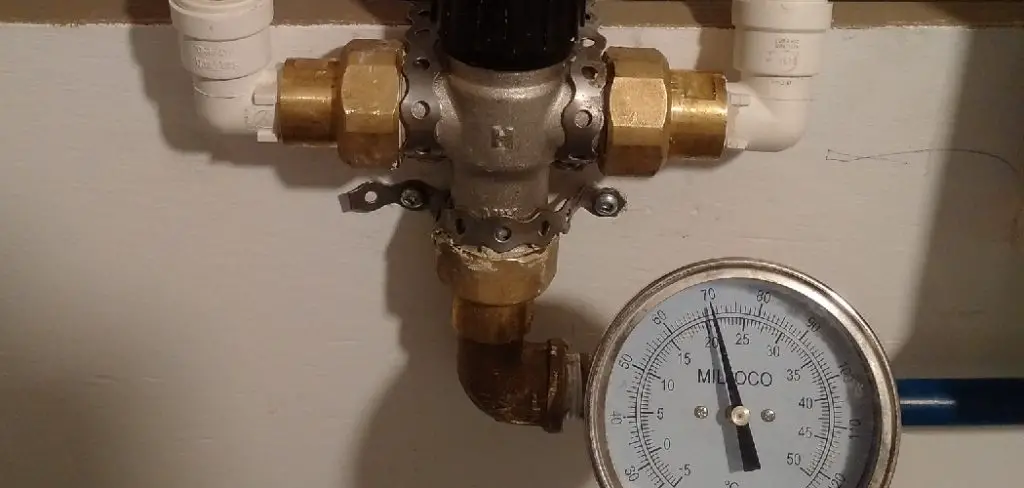
This article will offer several tips and techniques to help you get the perfect temperature in your shower. From checking tankless heaters to turning up the thermostat on a water heater or buying special tools for higher temperatures, there are plenty of ways to increase the water temperature in the shower without breaking the bank.
These strategies on how to increase water temperature in shower will help make those chilly showers more bearable and give you more warmth while bathing each day.
What Will You Need?
To get started, you’ll need a few items to help increase the water temperature in your shower. Some of these may require an upfront cost, but it will be worth it when you can finally enjoy a warm, relaxing shower. Here’s what you’ll need:
- A thermometer
- A wrench or pliers
- Pipe insulation (optional)
- Shower head with adjustable temperature settings (optional)
Once you have all of these materials, you’re ready to start changing and increasing your shower’s water temperature. Let’s get started!
10 Easy Steps on How to Increase Water Temperature in Shower
Step 1: Test the Current Water Temperature
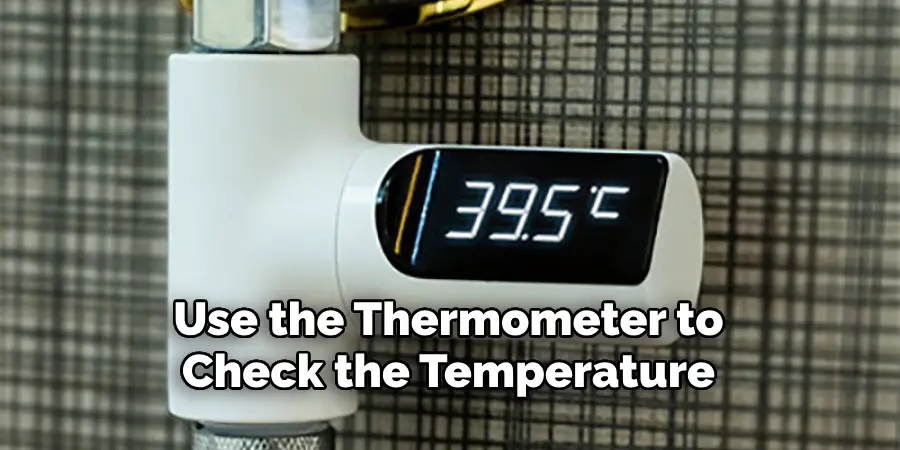
The first step is to determine the current temperature of your water. Turn your shower on and allow it to run for a few minutes so the water reaches its normal temperature. Afterward, use the thermometer to check the temperature. This will serve as your baseline temperature, which you’ll refer to as you work on increasing the water temperature.
Step 2: Check the Water Heater Temperature Setting
Your water heater has a thermostat where you can adjust the temperature. Locate your water heater and check the current setting. Most manufacturers set the thermostat at 120°F (49°C) for safety purposes, but you can increase it gradually to a comfortable level. Use your wrench or pliers to adjust the temperature dial, but avoid exceeding 140°F (60°C) to avoid scalding risks.
Step 3: Insulate the Pipes
Heat loss can occur as the hot water travels from the heater to your shower, especially during colder months. To minimize this, consider insulating your pipes with foam pipe insulation. This simple yet effective method can help retain the heat in the water as it flows to your shower. Remember to cover as much of the pipe as possible for optimal results.
Step 4: Install a Thermostatic Shower Valve
A thermostatic shower valve is a device that helps regulate the water temperature in your shower. It automatically adjusts the hot and cold water pressure balance to maintain a consistent water temperature. Installing this device can help increase the water temperature in your shower and prevent sudden temperature drops when someone else in the house uses a faucet or flushes a toilet. It might require professional installation, but the benefits of a steady and potentially higher water temperature can be worth the investment.
Step 5: Install a Shower Head with a Higher GPM
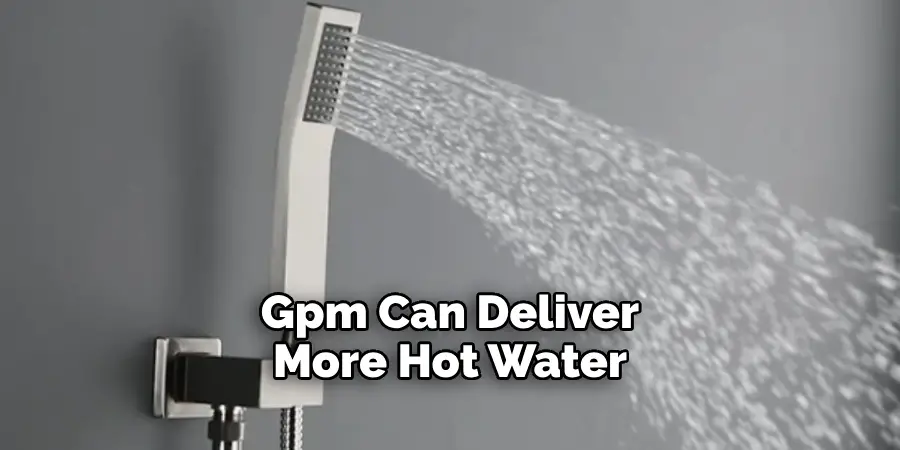
GPM stands for Gallons Per Minute and indicates the water flow rate from your shower head. A shower head with a higher GPM can deliver more hot water from your heater to your shower. Replace your shower head with a higher GPM rating to increase the hot water output. Remember, higher GPM may increase your water usage, so choose a rate that balances temperature and conservation.
Step 6: Reduce Hot Water Demand Elsewhere
Another effective way to increase the water temperature in your shower is by reducing the demand for hot water elsewhere in your home. This means avoiding activities requiring large amounts of hot water – like running the dishwasher or washing machine – while you shower. You can effectively increase its temperature by freeing up more hot water for your shower.
Step 7: Clean Your Shower Head
Over time, mineral buildup can occur in your shower head, causing it to function less efficiently. This can result in lower water temperatures. To address this, remove your shower head and soak it in equal parts white vinegar and water for several hours. Rinish thoroughly and reinstall it. You may notice a significant increase in water temperature by improving the flow of water.
Step 8: Check for Pipe Leakage

If you still have not achieved your desired water temperature, your pipes might leak. This can cause a loss of hot water between the water heater and your shower. Call in a professional to inspect your pipes and fix any leaks.
Step 9: Consider a Tankless Water Heater
If all else fails, consider investing in a tankless water heater. Unlike traditional water heaters, tankless models heat water on demand, providing a more consistent hot water supply for your shower.
Step 10: Contact a Professional
If you’re still having problems with water temperature after following these steps, it may be time to call a professional. They can assess your situation and provide the best solution for your needs. They can also ensure that all safety measures are followed to avoid potential hazards.
By following these steps, you should be well on your way to increasing the water temperature in your shower.
5 Additional Tips and Tricks
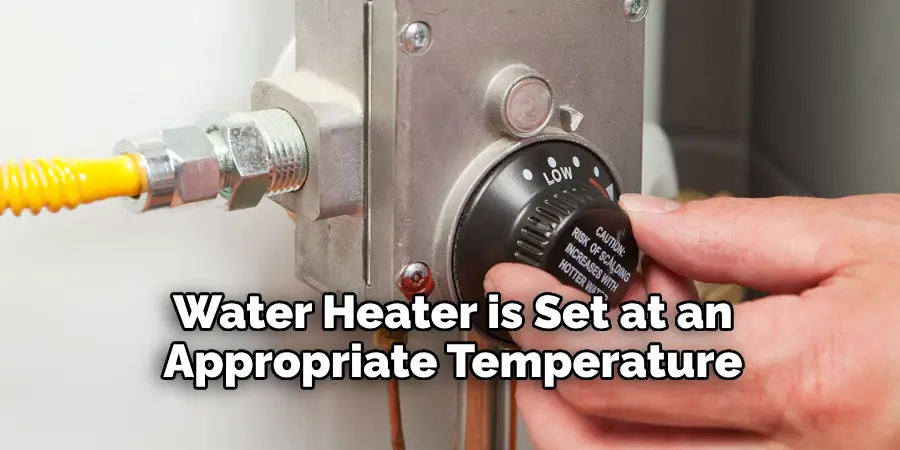
- Check the Water Heater: Ensure your water heater is set at an appropriate temperature. Most water heaters are adjustable, and a quick adjustment might be all you require to increase your shower’s water temperature.
- Inspect the Shower Valve: The valve might have a limit stop prevent it from getting too hot. If this is true, adjusting the limit stop can allow more hot water into the mix.
- Upgrade Your Water Heater: If your water heater is old or cannot provide adequate hot water, consider upgrading to a new unit with a larger capacity or more efficient heat transfer.
- Install a Hot Water Booster: A hot water booster will increase the water temperature as it moves towards your shower, giving you a hotter shower without needing to adjust the water heater.
- Flush the Water Heater: Sediment build-up in your water heater can reduce its efficiency and ability to provide hot water. Regularly flushing the water heater can help maintain its performance and ensure a warmer shower.
With these additional tips and tricks, you can easily increase the water temperature in your shower to make it more comfortable for your needs.
6 Things You Should Avoid

- Avoid Ignoring Safety Measures: While it’s understandable that you want a hotter shower, never exceed the recommended safety limit of 120°F (49°C) on your water heater. This can prevent accidental burns or scalding.
- Avoid DIY-ing Major Changes: If adjustments like changing the water heater or tampering with the shower valve are required, it’s best to consult with a professional plumber. Incorrect installations or adjustments can lead to more severe issues.
- Avoid Neglecting Regular Maintenance: Regular maintenance of your shower system and water heater, including flushing out sediment and checking for leaks, is crucial to its performance. Don’t put it off.
- Avoid Using Unauthorized Additional Fittings: While hot water boosters can be a good solution, make sure you choose a recognized and safety-approved product. Low-quality or unauthorized products can damage your system.
- Avoid Ignoring Unusual Signs: If you notice any unusual signs like inconsistent temperatures or strange noises from your water heater, don’t ignore them. These could be indicators of a more significant issue that requires immediate attention.
- Avoid Adjusting the Water Heater too High: While you may want a scalding hot shower, turning up your water heater to its highest setting can be dangerous and costly. Plus, it can cause damage to your system in the long run.
By avoiding these common mistakes, you can ensure a steady and safe increase in your shower’s water temperature.
Why is the Water Too Cold in My Shower?
If you’ve been struggling with a cold shower, it might be due to various reasons. The most common causes include:

- An Improperly Set Water Heater Temperature: As mentioned earlier, check your water heater’s temperature setting and adjust it if necessary.
- Mineral Buildup in the Pipes: Over time, minerals can build up in your plumbing system, reducing water flow and affecting its ability to heat up properly.
- Old or Faulty Fixtures: If your showerhead or faucet is old or worn out, it may not distribute hot water efficiently.
- Faulty Shower Valve: A malfunctioning shower valve can prevent hot water from reaching your showerhead, resulting in a colder shower experience.
To determine the root cause of your cold showers, it’s best to consult with a professional plumber who can assess your system and provide appropriate solutions. So, if you’re wondering why the water is too cold in your shower, keep these common causes in mind and take the necessary steps to resolve them. Remember, a comfortable and warm shower is just a few adjustments away!
How Do Shower Temperature Controls Work?
Most modern showers have temperature controls that allow you to adjust the water temperature according to your preference. These controls work by mixing hot and cold water from separate pipes or channels, creating a balance of hot and cold water for a comfortable shower experience.
The most common type of shower temperature control is a pressure-balancing valve, which works by monitoring the pressure of incoming hot and cold water. If there is an imbalance in pressure, it will automatically adjust the mix to maintain a consistent temperature.
Another type is the thermostatic valve mentioned earlier, which uses a thermostatic cartridge to regulate and maintain a set temperature.
These controls ensure safety while using hot water and providing a pleasant shower experience. It’s essential to regularly check and maintain these controls to ensure they are working correctly and efficiently.
What is the Disadvantage of Thermostatic Shower?
Despite their effectiveness in maintaining a consistent water temperature, there are a few disadvantages to using thermostatic showers:
- Cost: Thermostatic shower valves can be more expensive than traditional pressure-balancing valves.
- Complexity: The technology used in thermostatic shower valves can make them more complex and difficult to install or repair.
- Small Hot Water Supply: If your hot water tank is small or efficient, a thermostatic valve may need help to maintain a steady stream of hot water, resulting in lukewarm showers.
- Sensitivity to Changes in Water Pressure: A sudden change in the water pressure can affect the temperature control of a thermostatic shower, potentially leading to an uncomfortable or unsafe experience.
- Potential for Scalding: As with any hot water system, there is always a risk of scalding if the temperature is set too high or if there are issues with the valve’s regulation.
While these disadvantages should be considered when choosing a shower system, many people find the consistency and comfort of a thermostatic shower to outweigh any drawbacks. It’s ultimately a personal preference and depends on your specific needs and budget.
Conclusion
In conclusion, the best way to increase water temperature in the shower is by using a water heater or increasing the temperature of your home’s hot water tank. It can be economical and easy if you educate yourself on how to use and maintain these components correctly. Investing in an efficient model for either choice is worth it in the long run, as it will save you time and money.
Furthermore, essential maintenance for each appliance would help prolong its life and keep it from heating inappropriately. If you follow these tips closely, having an enjoyable shower experience should certainly be within reach!
Hopefully, the article on how to increase water temperature in shower has been helpful. Remember, if you encounter any issues that require professional assistance, don’t hesitate to consult with a trusted plumber for guidance and solutions. With proper care and maintenance, you can enjoy a consistently warm and comfortable shower every day. So don’t wait any longer – take proactive steps to ensure your perfect shower temperature is now well within your grasp. Thank you!
You Can Check It Out to Replace Water Heater Control Valve

